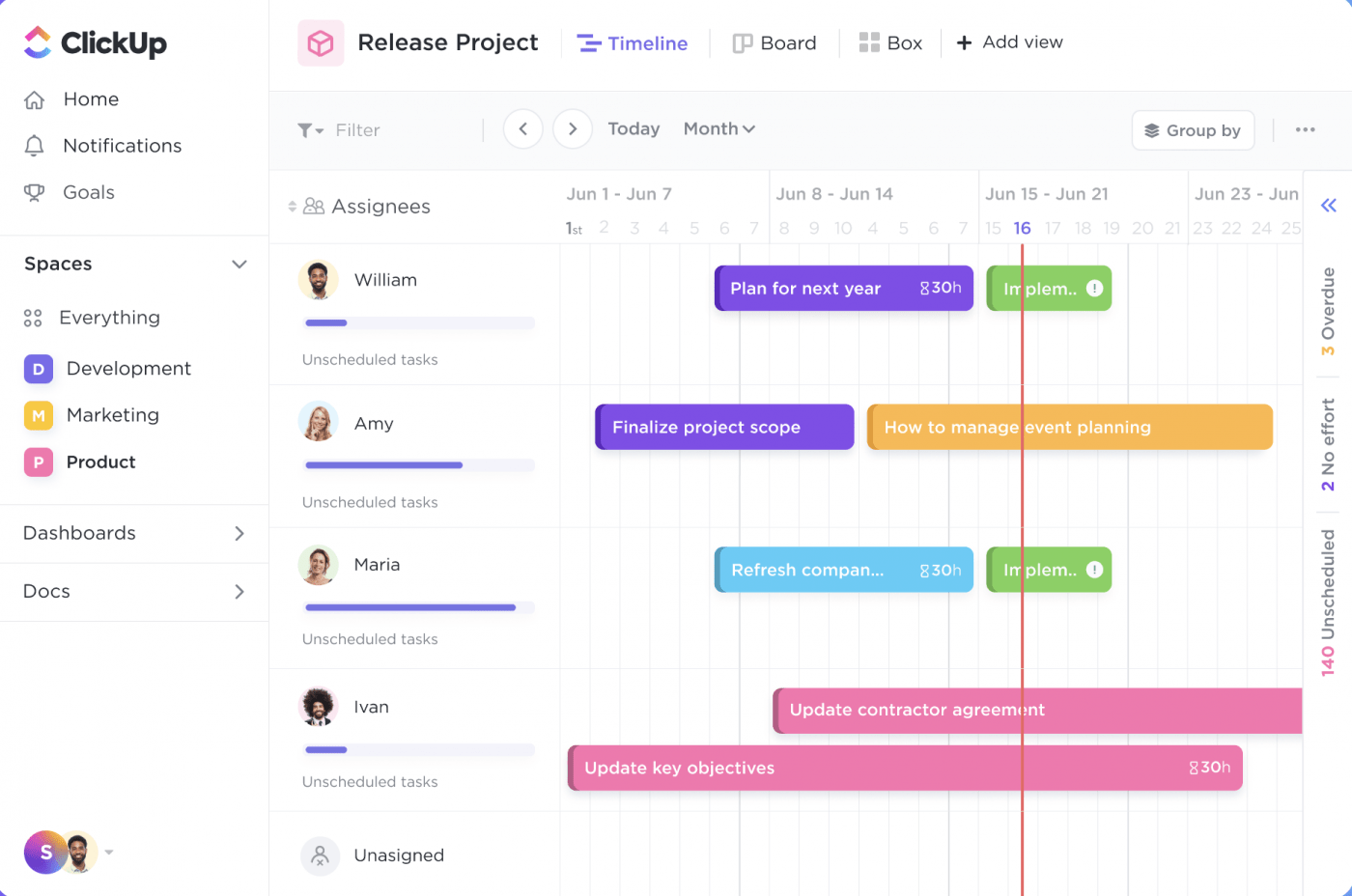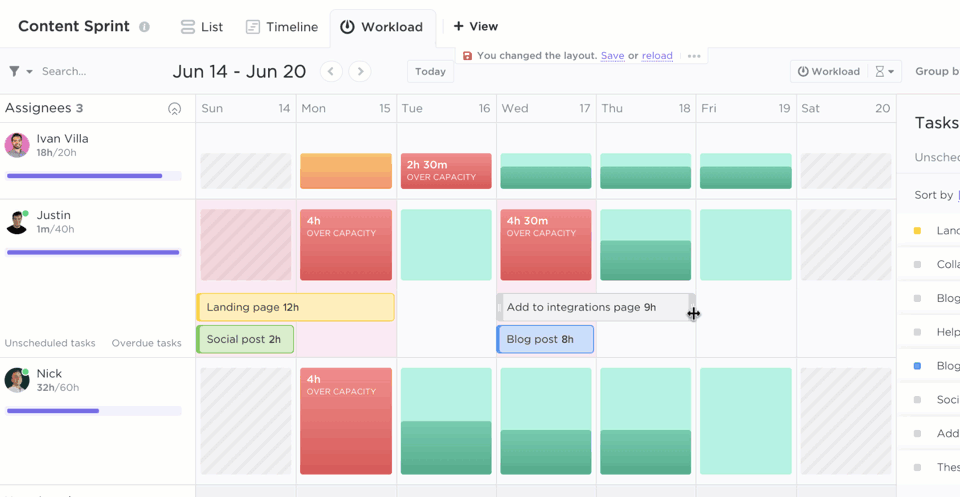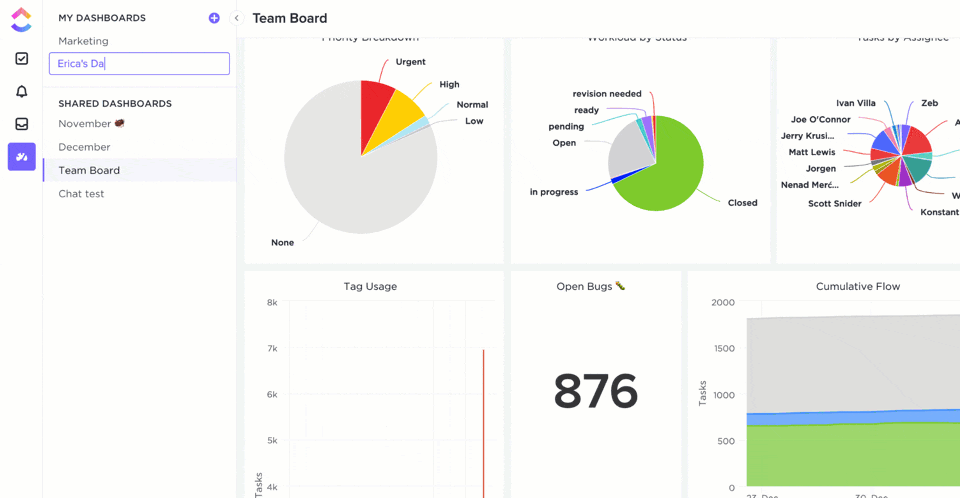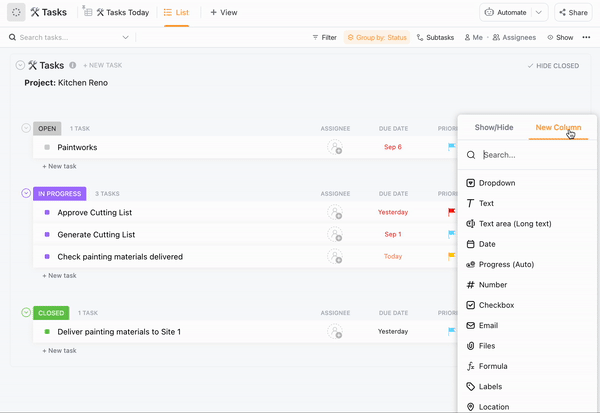How to Manage a Project Budget in 7 Easy Steps (With Tips & Templates)

Sorry, there were no results found for “”
Sorry, there were no results found for “”
Sorry, there were no results found for “”

Budget management has a bad rap: People associate it with boring spreadsheets and lengthy expense reports. But managing project budgets is actually an art form—and, for those who work at agencies, essential to your company’s business model.
A good project budget is more than just dollars and cents–it’s context. It’s a tool to help tell the story of what your team is doing and how well they’re doing it.
This approach to project budget management helps you see, in real time, what’s working and what’s not. Whichever project management budgeting methods you prefer, they have to help you create a project budget that gets results. Here are the steps you should take to set and track every project budget you’re in charge of.
A project budget is a financial plan that outlines the estimated costs of all the activities required for successful project completion. It includes all the resources required for a project, such as materials, equipment, labor, and other expenses.
A project management budget isn’t “$20,000.” It’s a clear breakdown of how you’ll spend that $20,000 and why you’ll spend it that way.
Theoretically, a new hire should be able to walk into your office or agency and execute the budget you’ve created without further guidance. Unfortunately, managing project budgets is not exactly easy without the right approach and tools.
As a starting point, your budget should include three things:
We’ll go into more detail on how to build each of these components into your budget shortly.
Take control of your project costs with ClickUp’s Project Budget Template with WBS. Plan expenses, track spending, and keep your budget in check with ease!
Because your budget includes context about your project, it can be used to guide and track your team. Good budget management can help you with:
Now that you know how complex project budget management is, you might feel a little intimidated. Don’t worry! With a bit of planning, anyone can excel at managing project budgets. Let’s go over how to build and manage a budget step by step.
You’ll want to start with a full project plan that’s made in collaboration with your project team and any stakeholders. You won’t even have numbers to work with at this point — and that’s okay!
A good project budget requires you to know the entire project scope and every deliverable your team will be accountable for.
Check out these expense report templates!
💡 Pro Tip: The Timeline View in ClickUp gives you the ideal overview to help plan your project budget.

Just because we’re calling this an “outline,” it doesn’t mean it’s skeletal. You’ll need to break every deliverable down into a step-by-step progression so you can see every necessary resource.
Say your project is a social media advertising package. For managing project budgets, you’ll need team members to:
Bring in your team members to check over each deliverable’s subtasks. They routinely create such project deliverables, so they know everything that goes into making the final product.
Bonus: Bookkeeping templates!
Time is money, and so are resources like freelancers, training, and research. Every step your team takes will require at least one of these things.
Under each subtask, make a list of every resource required. Here are some common project resources:
You may have other expenses, like procurement and IT, tied to your project budget, but the list above covers the most common resources required for teams like yours.
💡 Pro Tip: List down all resource requirements collaboratively with stakeholders on virtual ClickUp Whiteboards
Related: Price list templates!
Once you’ve broken down your project into every resource you’ll need, it’s time to figure out what all these resources will cost.
There are four ways to estimate a project budget. Read the method descriptions below and choose one based on your agency structure and the available tools.
If you already have the dollar amount that’s allocated for the project, your job is to determine what you can achieve with the money you have. Assign a certain amount to each deliverable based on how resource-heavy each step is. Then, project managers should allocate all subtasks.
Budgeting with a top-down approach may require you to pare down the project’s scope and think of more cost-effective ways to meet your objectives.
Assign a dollar amount to each resource you listed in the last step, then sum everything up to get the final project budget. You’ll need to estimate work hours, freelancer rates, and tool costs to get an accurate number. Ask your team (or project managers) for help if you’re not sure what’s reasonable for any given item.
💡 Pro Tip: Try the Workload View for effective resource planning and utilization

Find a previous project that’s similar to the one you’re budgeting for now, and use the actual costs from that project as estimates of what you’ll need for this project. This method only works if 1) your past project costs included comparisons between estimated and actual costs and notes of any unexpected expenses and 2) the two projects are virtually identical in scope.
This method asks you to make three different budgets and then average them. You’ll need to calculate:
Take these three numbers and average them to calculate your total budget. Consider weighting one higher than the others, depending on which scenario you think is most likely.
If you’re torn between project budget estimate methods, don’t sweat it! You can always combine them. For example, you may use bottom-up estimates to build your project budget for the three-point method.
Bonus: Budget proposal templates!
Contingencies are the “oh no” fund in case you really do hit that worst-case scenario budget. It’s an essential part of your cost risk management plan.
Typically, your contingency fund will be 5-10% of your total project budget. You may not need to dip into your contingency funds often, which is great!
But every project budget should have them, just in case. Managing project budgets is just that bit less stressful when you know you have backup!
Bonus: Business model canvas template
Once you have all your deliverables and the numbers attached to them, it’s time to make an official budget document. We love using ClickUp for project budgeting (and we’ve shared some useful templates below!).
💡 Pro Tip: Clickup Docs helps you document your project budget securely and collaboratively.
If you’re not using ClickUp (yet), we recommend you use a free project management software rather than a spreadsheet. A good app makes it easier to organize and update all the information you need to include.
And speaking of, your project budget document should include:
After you have all that information, add up the total costs for each deliverable or milestone to calculate your projected project budget.

And as one last step, ask your team members working on the project to review the budget (again) to make sure you didn’t miss anything. It’s much better to catch a mistake at this stage than mid-way through the project budgeting process.
📮 ClickUp Insight: 78% of our survey respondents make detailed plans as part of their goal-setting processes. However, a surprising 50% don’t track those plans with dedicated tools. 👀
With ClickUp, you seamlessly convert goals into actionable tasks, allowing you to conquer them step by step. Plus, our no-code Dashboards provide clear visual representations of your progress, showcasing your progress and giving you more control and visibility over your work. Because “hoping for the best” isn’t a reliable strategy.
💫 Real Results: ClickUp users say they can take on ~10% more work without burning out.
You may pitch your budget to a client or simply submit it to your boss or other stakeholders. Tailor your ask to the audience.
But make sure you include details that show how your budget will lead to the desired project results — and how any decrease in the funding will necessitate scope changes. The work you’ve done in the previous steps will make it easy for you to justify your project budget request.

Your budget can only help you track your progress and control costs and scope if you keep it current. You don’t need to update your budget right after every purchase, but you should set aside time to add expenses and gauge whether you’re straying too much from the estimated costs.
The optimal update frequency will vary based on the length of each stage and/or time between each deliverable. A budget that includes a lot of social media ad spend may need to be updated every few days; a project budget for a 200-page website may be fine with a weekly or biweekly check-in.
💡 Pro Tip: Custom Fields in ClickUp help you quickly identify variances in project spends vs. budget.
If you do catch serious mismatches between your budgeted and actual spend, move into mitigation mode. First, figure out what went wrong. Did you miss a subtask that took your freelancer an entire day to complete? Did the client rip up their project plan midway through the deliverable, so you had to backtrack?

Whenever you identify an error, look to see if it’s been replicated in other stages and deliverables. Finally, check whether your contingency will cover the unexpected overage. If not, can you reallocate resources or find a way to use fewer resources for any other subtasks your team hasn’t started on yet?
Or do you need to discuss other options?
These discussions may involve your bosses or the client, and they’re not fun to have. But the sooner you have them, the more likely you are to find a solution that will at least work for everyone, even if it’s not ideal.
Make sure any changes are recorded in your project budget along with notes so you can remember what went wrong and plan to spend accurately in the future.
Check out these general ledger templates!
By this point, you know project budget management is complex — so why not make your life easier with a template? You’ll save time with all your setup and have access to ClickUp’s excellent Dashboards to help visualize your project budgeting and progress.
Here are seven of our favorite free ClickUp project budget templates that will make you a budget management pro in no time:
Since the budget process starts with a full project outline, why not start your process with ClickUp’s Project Outline Template? It has space for you to add everything you need for pre-budget planning:
This won’t be the only template you need to rock for a project budget, but it will be the first template you should use during your budgeting process.
Ideal for: Creating a comprehensive project plan to base your project budget calculations on.
Cost estimates require math…a lot of math. ClickUp’s Project Resource Matrix Template guides you through those calculations by telling you where to put numbers and calculating the final amounts with formula fields.
Use it to estimate costs for all types of resources (labor, equipment, overhead, SaaS tools, and raw materials), so don’t be afraid to use it for even the most unlikely projects. The views on this template include:
These features make it easy to input cost estimates, project plan your resource management, and see where you should be budget-wise at any point in the budget timeline.
Ideal for: Efficiently calculating all resource costs for your project budget preparation.
ClickUp’s Budgeted Project Management Template is designed to help you stay on budget and on track.
With this template, you’ll be able to:
Categorize and add nine attributes such as Remaining Budget, Project Budget, Project Phase, Within Budget, and Notes.
The Project Schedule View allows you to plan the timeline and milestones for the project. The Budget View helps you manage and track expenses associated with the project.
Ideal for: Managing project budgets and profitability with ease.
With ClickUp’s Cost Analysis Template, you can quickly and accurately assess the impact of costs on a project’s success by tracking and analyzing them in one place.
Open 6 different views in different ClickUp configurations, such as the Cost Variables, Benefit Variables, Current Year Cost Profile, Analysis, and Getting Started Guide so that you can analyze at a glance.
The template gives project managers a streamlined way to track expenses and identify areas of potential savings.
Ideal for: Analyzing project costs to identify scope for improving efficiency.
If you want a more advanced and in-depth tracker than the Project Deliverables template, turn to ClickUp’s Project Request and Approval Template.
You can set due dates and priorities — which can help guide budget adjustments if they become necessary.
Ideal for: Tracking and managing all project requests and approvals.
If you have a lot of project budgets to manage, use ClickUp’s Project Cost Management Template for a high-level view of everything. This template comes with six statuses (to cover everything from new projects to evolving budgets to completed projects) and six views:
It’s the one project budget management template to rule them all—and it will keep you ridiculously organized.
Ideal for: Project budget tracking and visualization across multiple projects.
By this point, you know how important it is to break down your project budget by deliverable (and then by subtask). ClickUp’s Project Deliverables Template includes custom fields for budget, remaining budget, and expenditures so far.
It offers six views—including a Gantt view and a project budgeting List— and automation that will post a comment when any custom field changes from a team lead or project manager.
In other words, this template is an agency-ready live budget tracker. Managing project budgets will be a breeze with this template on your side.
Ideal for: Real-time tracking of project budgets by deliverables.
By adhering to these best practices, project managers can effectively manage their budgets, ensuring projects are completed on time and within financial constraints while maintaining quality standards.
Budget management success means project success…so take the time to build a thorough and thoughtful project budgeting process. However, it doesn’t end at that.
Success comes through managing project budgets throughout the project to ensure there is no significant variance. When there is a lot going on, this can take up precious time. That’s why project managers rely on specialized tools like ClickUp.
Combine your knowledge with our great tools at multiple convenient price points to build budgets that will lead to successful projects.
Get started with ClickUp today!
© 2025 ClickUp